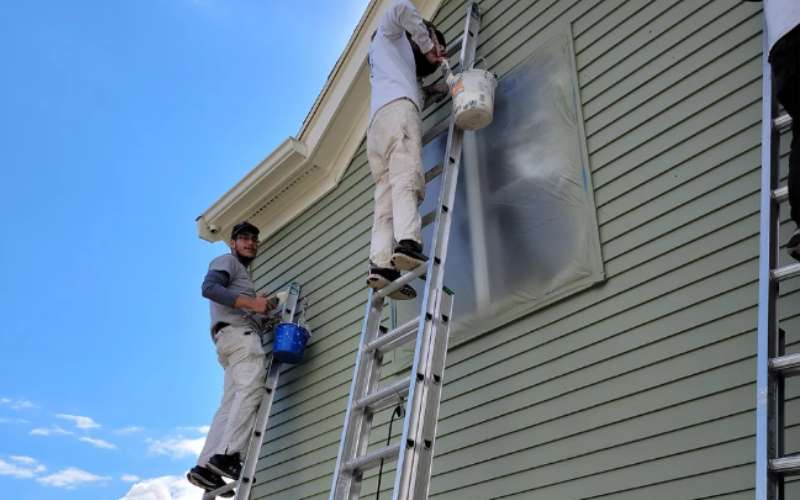When planning exterior painting, choosing the right season for the job can make all the difference. Timing affects the quality and durability of the work. Imagine scheduling your project, only to face rain or extreme heat—both can ruin your efforts. The good news is, there are ideal seasons that provide the best conditions for painting. In this post, we’ll dive into how to make the right decision, ensuring your exterior painting project runs smoothly and effectively.
Best Time of Year for Exterior Painting: Tips for Success
When it comes to exterior painting, timing is everything. Understanding the ideal conditions can help you avoid costly mistakes and ensure long-lasting results. Let’s break down the factors you should consider when choosing the right season for the job.
01. Temperature and Weather Conditions
Temperature plays a crucial role in exterior painting. The paint needs to cure properly, which requires a stable temperature. For most types of paint, the ideal range is between 50°F and 85°F. Extreme heat can cause the paint to dry too quickly, leading to cracking, while cold temperatures can slow down the drying process, leaving the surface vulnerable to imperfections. Spring and fall typically offer the best weather for painting, with moderate temperatures and lower humidity levels.
02. The Impact of Humidity
Humidity is another factor to keep in mind. High humidity can make paint take longer to dry and can lead to bubbling or blistering. This is especially true in coastal regions where moisture levels are consistently high. Low humidity allows paint to dry smoothly and evenly, creating a professional finish. That’s why fall is often a preferred season, as it typically brings drier air and cooler weather.
03. Avoiding the Rainy Season
Rain is a major enemy of exterior painting. Not only does it ruin the fresh coat, but it also prevents the paint from adhering properly to the surface. Summer thunderstorms or wet seasons can derail your project. Checking local weather forecasts and planning around potential rain is essential to ensure your painting job is successful. Waiting at least 24 hours after rain before painting is a good rule of thumb.
04. Benefits of Painting in Spring
Spring is an excellent season for exterior painting. The weather is typically mild, making it easier for painters to work and for the paint to dry. Additionally, painting in spring prepares your home for the upcoming summer, which can bring harsher conditions. Completing the job early ensures your exterior is protected from heat and UV rays.
05. Why Fall is Another Great Option
Fall is often considered the perfect season for exterior painting. The temperatures are cooler, the air is drier, and there’s less chance of sudden rain showers compared to summer. Painting in the fall allows your home’s exterior to be ready for the harsh winter months, giving you peace of mind that your property is properly protected.
06. How to Prepare for Your Exterior Painting Job
Regardless of the season, preparation is key. Start by thoroughly cleaning the exterior surface. Remove dirt, grime, and any old peeling paint to ensure a smooth finish. Power washing is a popular choice for this task. Once clean, check for any repairs that may be needed. Cracks, holes, or damaged areas should be addressed before applying paint. This ensures the paint adheres correctly and provides a uniform finish.
07. Choosing the Right Paint
Selecting the right type of paint for your climate and season is crucial. Acrylic latex paints are popular because they perform well in most conditions. They are durable, flexible, and resist fading even under intense sun exposure. Oil-based paints, while more durable, are better suited for cooler months because they take longer to dry. Consulting with a paint professional can help you choose the best option for your project.
08. Benefits of Hiring a Professional Painter
While many homeowners attempt DIY exterior painting, hiring a professional ensures the job is done efficiently and correctly. Professionals have the tools and expertise to deal with weather conditions, surface preparation, and applying the correct number of coats. They also know how to handle potential challenges like uneven surfaces or difficult-to-reach areas. By hiring a pro, you save time, effort, and reduce the risk of needing repairs later.
Get Ready for a Successful Exterior Painting Project
Choosing the right season for your exterior painting project can make a world of difference. Whether it’s spring or fall, proper timing ensures your home gets the protection it needs. Contact us today to schedule a consultation, and let our team help you transform your home’s exterior with professional results that last.

